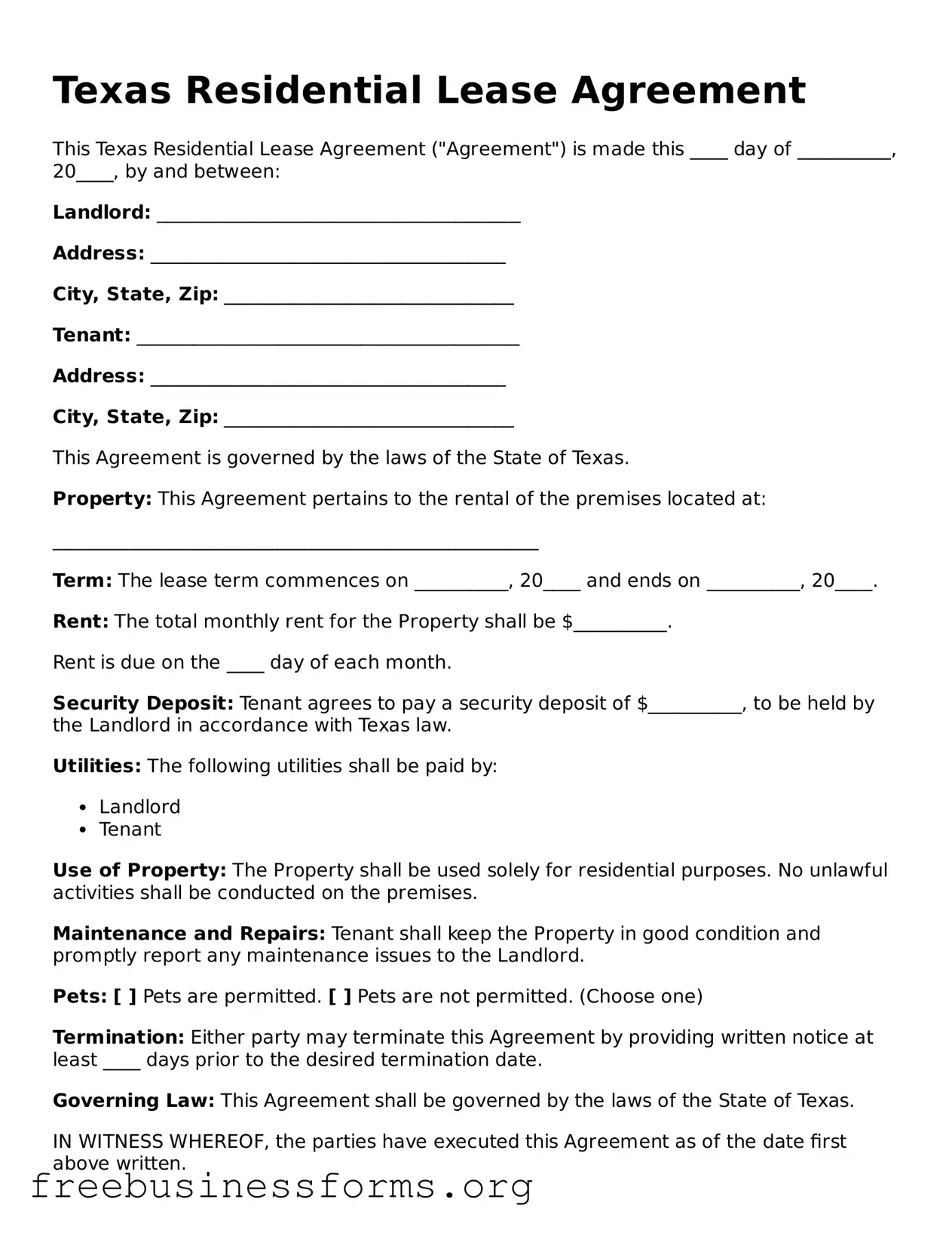Texas Residential Lease Agreement
This Texas Residential Lease Agreement ("Agreement") is made this ____ day of __________, 20____, by and between:
Landlord: _______________________________________
Address: ______________________________________
City, State, Zip: _______________________________
Tenant: _________________________________________
Address: ______________________________________
City, State, Zip: _______________________________
This Agreement is governed by the laws of the State of Texas.
Property: This Agreement pertains to the rental of the premises located at:
____________________________________________________
Term: The lease term commences on __________, 20____ and ends on __________, 20____.
Rent: The total monthly rent for the Property shall be $__________.
Rent is due on the ____ day of each month.
Security Deposit: Tenant agrees to pay a security deposit of $__________, to be held by the Landlord in accordance with Texas law.
Utilities: The following utilities shall be paid by:
Use of Property: The Property shall be used solely for residential purposes. No unlawful activities shall be conducted on the premises.
Maintenance and Repairs: Tenant shall keep the Property in good condition and promptly report any maintenance issues to the Landlord.
Pets: [ ] Pets are permitted. [ ] Pets are not permitted. (Choose one)
Termination: Either party may terminate this Agreement by providing written notice at least ____ days prior to the desired termination date.
Governing Law: This Agreement shall be governed by the laws of the State of Texas.
IN WITNESS WHEREOF, the parties have executed this Agreement as of the date first above written.
Landlord Signature: _____________________________ Date: ________________
Tenant Signature: _______________________________ Date: ________________
